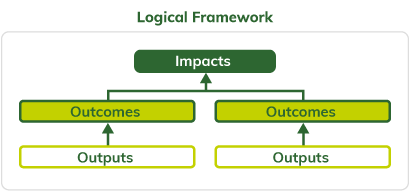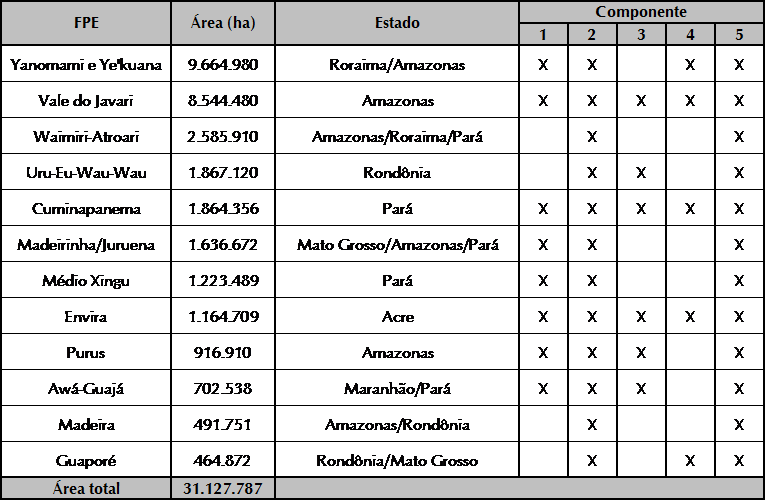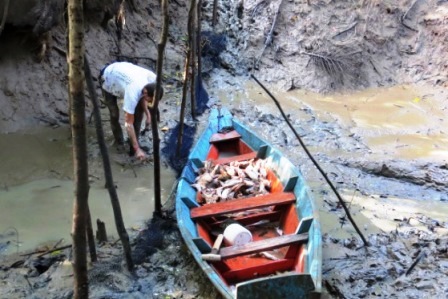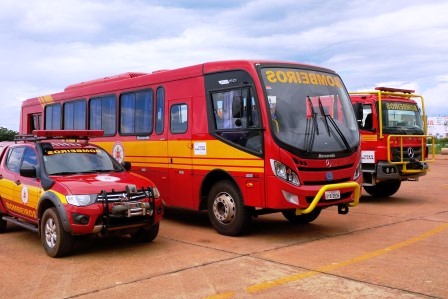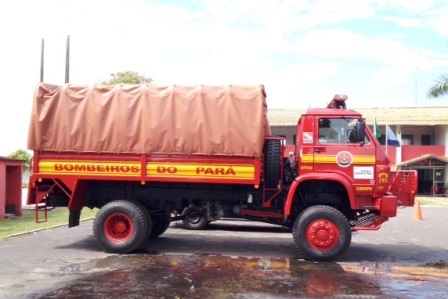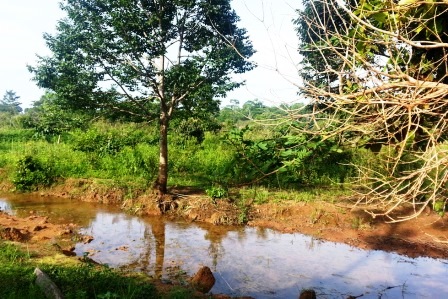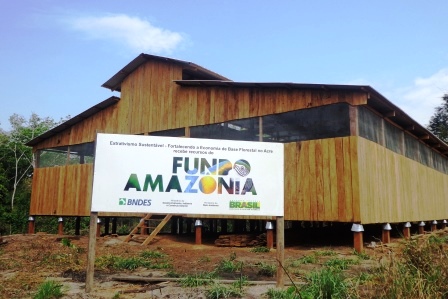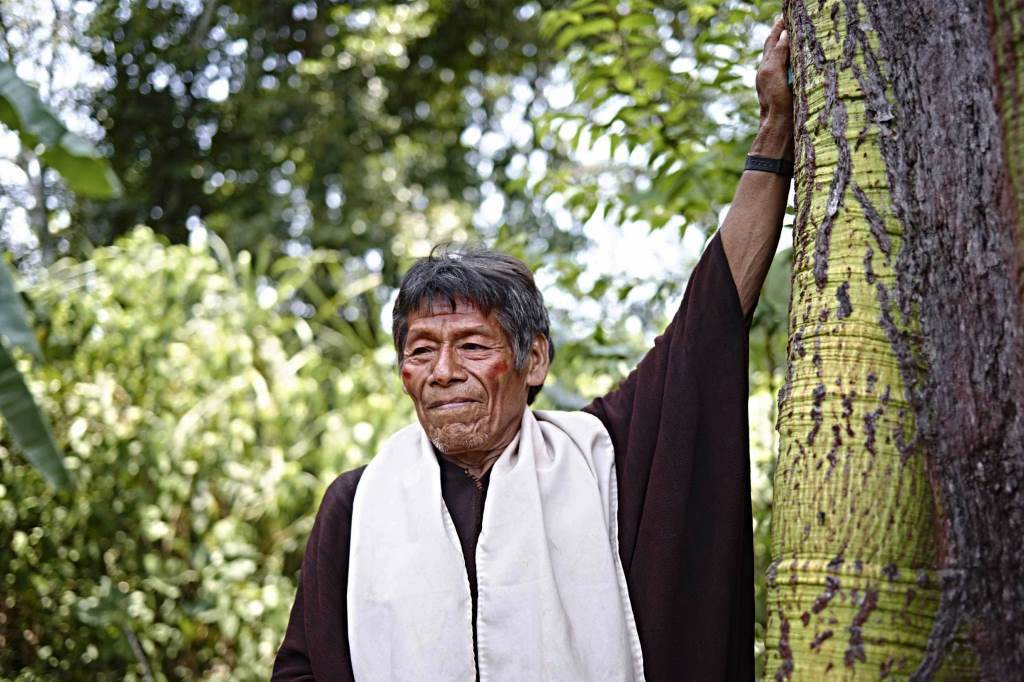RESULT AND IMPACT INDICATORS
Project activities contributed to the results related to the “spatial planning” component (3) of the Amazon Fund’s Logical Framework.
Direct effect 3.2: Protected areas with infrastructure, territorial protection and consolidated management.
Several indicators were agreed upon to monitor this objective.
• Number of records of isolated indigenous peoples and number of recent contact peoples and surrounding populations directly benefited by the activities supported by the project (outcome indicator)
This indicator, central to the project’s objectives, aimed to measure the effect of carrying out expeditions with the objective of confirming or discarding the presence of isolated Indians, thus qualifying the records present in Funai’s CGIIRC database.
Goal: Not defined | Results achieved: 44 records of isolated indigenous peoples were qualified (of which 28 in the subgroups “reference under study” and “information”), benefiting 1,166 individuals from recent contact (outcome indicator)
• Number of records of qualified isolated Indians from the improvement of information technology tool – georeferenced database (outcome indicator)
Goal: Not defined | Results achieved: 114
• Number of information on isolated Indians provided to the FPEs by indigenous peoples or surrounding communities (outcome indicator)
Goal: Not defined | Results achieved: 146
As previously reported, developing the Information System on Isolated Indigenous Peoples and Recent Contact in Brazil (SI3CR), with support from the Amazon Fund, allowed a remarkable advance in the storage and qualification of data and records about these peoples. Also during the execution of the project, initial loads of information were introduced, allowing Funai to improve the planning and scope of location and monitoring expeditions. Note that of the 114 records currently in the CGIIRC/FUNAI database, 52 were subject to expeditions and/or overflights in the period 2015-2017, 44 of which were supported under the project.
Regarding training actions for employees and sensitization of the populations directly involved in the issue, the following indicators were highlighted, both with results far superior to the goals:
• Number of Funai employees effectively using the knowledge acquired (outcome indicator)
Goal: 85 | Results achieved: 106
• Holding exchanges, meetings and publication of bulletins aimed at promoting the rights of isolated indigenous peoples located in the border regions of the member countries of the Organization of the Amazon Cooperation Treaty (OTCA), with the participation of civil society (output indicators).
No. of events
Goal: 11 | Results achieved: 14
No. of electronic bulletins disclosed
Goal: 24 | Results achieved: 12
Regarding this indicator, the number of editions below the target was justified by the undersizing of the difficulties encountered in its bimonthly publication. Thus, the focus on content considered more strategic for the project in a smaller number of editions was prioritized. It is thus evaluated that the bulletin satisfactorily achieved its objective, producing and disseminating qualified information on the topic of isolated indigenous peoples and recent contact in the Amazon.
• Number of thematic workshops with indigenous peoples and surrounding communities of isolated Indian territories (output indicator)
Goal: 54 | Results achieved: 122
Finally, it should be noted that the project’s set of actions has resulted in the strengthening of control over the territory in TIs over an area of 184,712 km².
Institutional and administrative aspects
The project was developed and executed in close technical cooperation with Funai, involving various sectors and units of the agency, in addition to the partnership and collaboration of various indigenous organizations and institutions whose work has an interface with the protection and promotion of the rights of isolated indigenous peoples and recent contact.
CTI’s experience in interlocution with international actors operating in the Amazon basin deserves to be highlighted, allowing the project to promote the exchange of experiences on policies to protect isolated indigenous peoples and recent contact.
Risks and lessons learned
Managing resources and operationalizing project activities were a great challenge, given the wide geographic range and the fact that most of the implementation sites present difficulties of access, communication, infrastructure and service offer.
CTI’s previous experience and the adoption of administrative procedures and routines for executing the project were fundamental to overcome these difficulties and ensure its favorable evolution, allowing, in terms of results, that all the expected products and services be executed and their objectives achieved.
In turn, the participation of the surrounding populations consisted of a central strategy of the project, requiring a major joint effort to raise awareness around the issue associated with protecting isolated peoples and recent contact.
Sustainability of resultsSustainability of results
The project has provided important improvements in the management of protection policies for isolated peoples and recent contact in two dimensions. In quantitative terms, it expanded the number and scope of field expeditions by Funai teams, contemplating both confirmed records and greater detail of unconfirmed records for later qualification. In the qualitative dimension, the project resulted in a wide production of information and technical subsidies for Funai professionals and other actors linked to the topic of isolated peoples and recent contact.
Similarly, the Information System on Isolated Indigenous Peoples and Recent Contact in Brazil (SI3RC) has proved to be a highly functional tool for the policy of protection and promotion of the rights of isolated and recently contacted indigenous peoples, improving information management by the CGIIRC/Funai.
Although gaps remain for the full care of the policy of protection and promotion of rights of isolated indigenous peoples and recent contact, it is undeniable that the project has made a significant contribution to meeting this challenge on a more qualified technical basis, constituting an important driving force for the sustainability of future actions associated with this issue.


